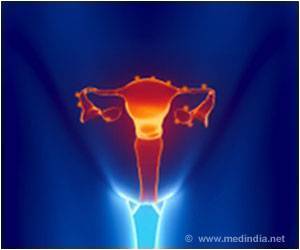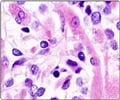Ewing sarcoma is almost always caused by a cancer-causing protein called EWS/FLI, said Stephen Lessnick, M.D., Ph.D., director of HCI's Center for Children's Cancer Research.

Discovery of a new drug with high potential to treat Ewing sarcoma, an often deadly cancer of children and young adults, and the previously unknown mechanism behind it, come hand-in-hand in a new study by researchers from Huntsman Cancer Institute (HCI) at the University of Utah. The report appears in today's online issue of the journal Oncogene.
In the lab, Lessnick and his colleagues found that an enzyme, called lysine specific demethylase (LSD-1), interacts with EWS/FLI to turn off gene expression in Ewing sarcoma. By turning off specific genes, the EWS/FLI-LSD1 complex causes Ewing sarcoma development. "This makes LSD-1 an important target for the development of new drugs to treat Ewing sarcoma," Lessnick said.
"For a long time, we've known that EWS/FLI works by binding to DNA and turning on genes that activate cancer formation," said Lessnick. "It was a surprise to find out that it turns genes off as well".
"The beauty, if there's anything beautiful about a nasty disease like this, is that if we can inhibit EWS/FLI, we can inhibit this cancer, because EWS/FLI is the master regulator of Ewing sarcoma," Lessnick added.
While Lessnick and his colleagues worked on EWS/FLI in their basic science lab, Sunil Sharma, M.D., director of HCI's Center for Investigational Therapeutics, professor in the Department of Medicine at the University of Utah, and an HCI investigator, had already focused on LSD-1 as a possible target for new cancer treatments and had been working for several years to design drugs that would inhibit its actions.
Advertisement
"After Steve showed that LSD-1 was directly regulating the function of EWS/FLI, we teamed up with him to see whether the LSD inhibitors we had discovered worked in Ewing sarcoma models," Sharma said. "Our tests in Ewing sarcoma tissue cultures show they are extremely potent."
Advertisement
"This is a great example of how collaboration between the therapeutics and basic science programs can lead to new treatments for patients—one of HCI's highest goals," said Sharma.
Source-Eurekalert













